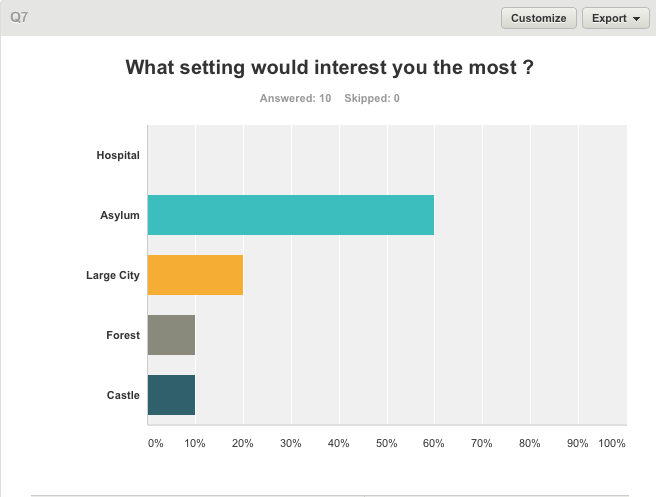In order to find out who my target audience is for my short film I conducted a survey using the online service, "Survey Monkey". I asked 10 questions in order to get a general idea on who my primary target audience would be.
It is clear to see from the answers to my first question that the most frequently answered option was 14-17 year olds followed by 18-20 year olds. This means that my primary audience for my short film would be 16-21 year olds meaning I will need to take into consideration their needs as a group in order to get them interested in watching my short film.
From these results to my second question I can see that I have no primary audience in terms of gender and I should cater to the needs and requirements of both genders in stead of just catering to the one and potentially losing a large majority of my audience.
From these results I can see that my target audience in terms of their average household income per year is those in social grades between E and C2. This is not surprising looking back at the age of my target audience, most of my audience will be college or university. This does not necessarily mean that I need to represent them in my short film particularly however it may make the film slightly more relatable.
From these results I can see that primarily my audience is heterosexual with only one person answering "homosexual". Society in general is far more accepting of homosexuals in todays modern society compared to their acceptance in the past. I don't think that these results should have too much influence on the content and character choices made in my short film, I also don't think that my chosen genre, horror/thriller is an appropriate genre to explore character sexuality.
From these results I can see that my audience has very mixed opinions from British short films with the majority of the people asked saying "sometimes". This may mean indicate an interest in British short films however they are yet to begin watching British short films as much as they do regular films or TV. In terms of my short film I can attempt to increase the interest in British short films by making something unique which could encourage my audience to watch more British short films.
From these results I can see that Horror/ Thriller is the most favoured genre from the people that I asked. My short film needs to fit into this genre in order for it to be popular.
From these results it is clear that an Asylum is the most interesting setting which ties in nicely with my previous questions results which told me that the Horror/Thriller genre is the most favoured genre.
From these results I can see that "No Escape" is the most popular option and so this will be the name of my Horror/Thriller short film.
From these results it is clear to see that the most interesting log line which i can use as a basis for my story is "Franklin a boy in trouble with schizophrenia is lured into a old run down asylum by his imaginary friend Toby. There is No Escape.
This research has helped me vastly understand who exactly my target audience is and has helped me make some critical decisions regarding the content of my short film.









